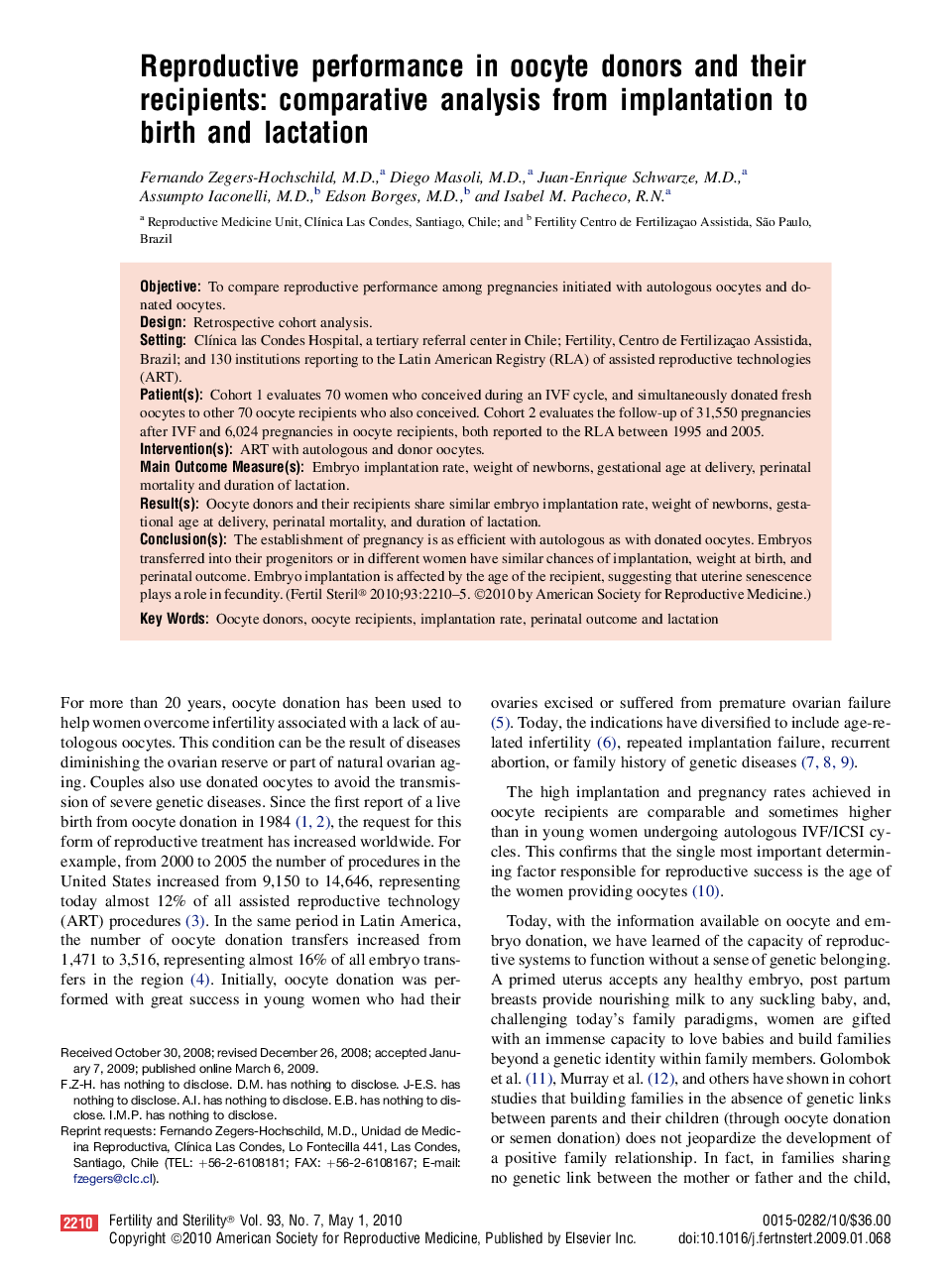| Article ID | Journal | Published Year | Pages | File Type |
|---|---|---|---|---|
| 3936332 | Fertility and Sterility | 2010 | 6 Pages |
ObjectiveTo compare reproductive performance among pregnancies initiated with autologous oocytes and donated oocytes.DesignRetrospective cohort analysis.SettingClínica las Condes Hospital, a tertiary referral center in Chile; Fertility, Centro de Fertilizaçao Assistida, Brazil; and 130 institutions reporting to the Latin American Registry (RLA) of assisted reproductive technologies (ART).Patient(s)Cohort 1 evaluates 70 women who conceived during an IVF cycle, and simultaneously donated fresh oocytes to other 70 oocyte recipients who also conceived. Cohort 2 evaluates the follow-up of 31,550 pregnancies after IVF and 6,024 pregnancies in oocyte recipients, both reported to the RLA between 1995 and 2005.Intervention(s)ART with autologous and donor oocytes.Main Outcome Measure(s)Embryo implantation rate, weight of newborns, gestational age at delivery, perinatal mortality and duration of lactation.Result(s)Oocyte donors and their recipients share similar embryo implantation rate, weight of newborns, gestational age at delivery, perinatal mortality, and duration of lactation.Conclusion(s)The establishment of pregnancy is as efficient with autologous as with donated oocytes. Embryos transferred into their progenitors or in different women have similar chances of implantation, weight at birth, and perinatal outcome. Embryo implantation is affected by the age of the recipient, suggesting that uterine senescence plays a role in fecundity.
